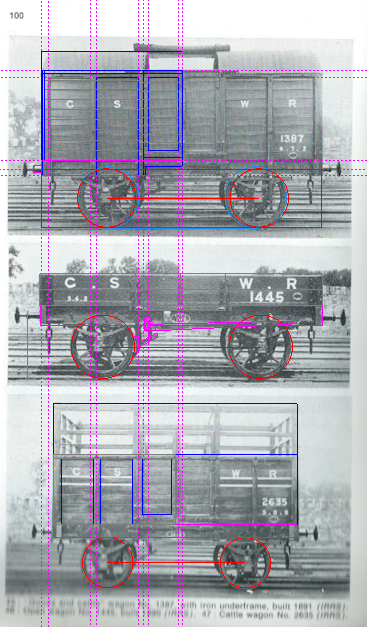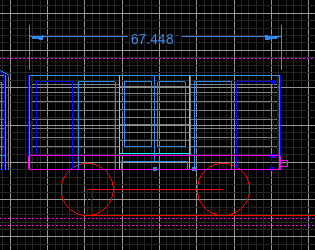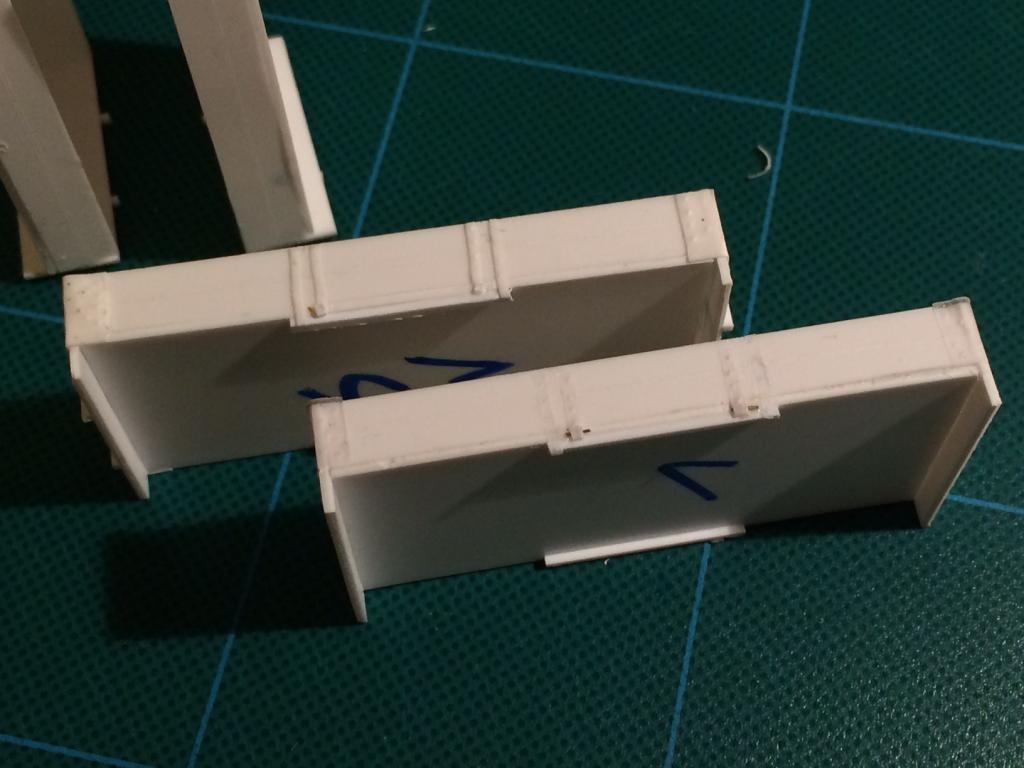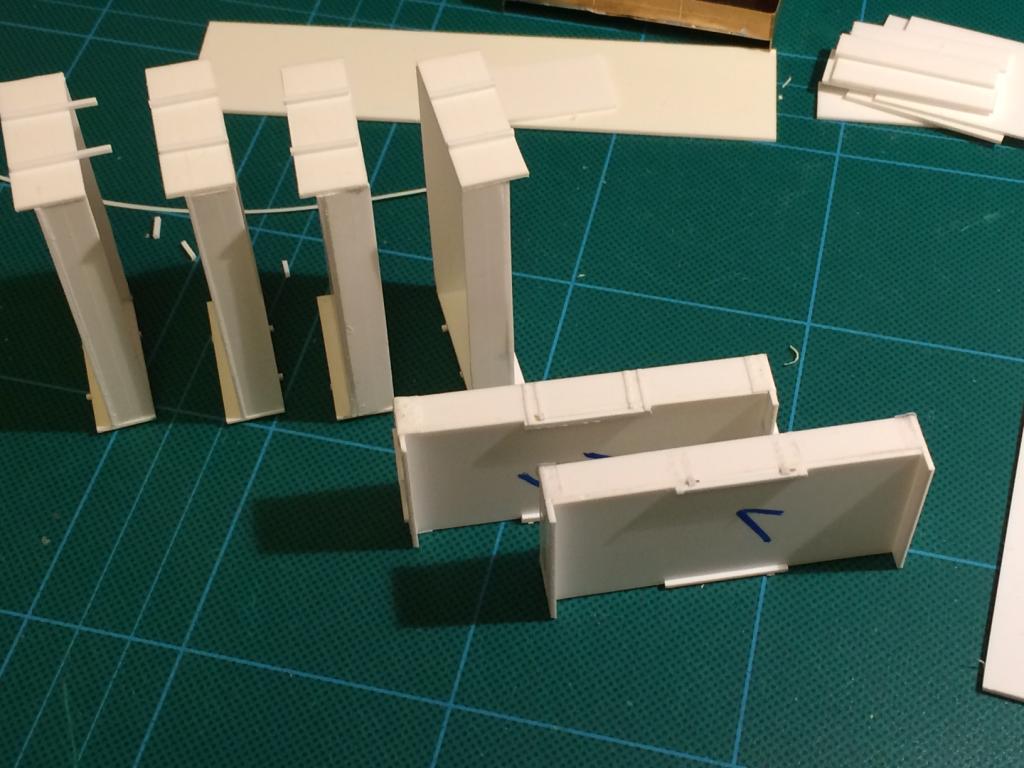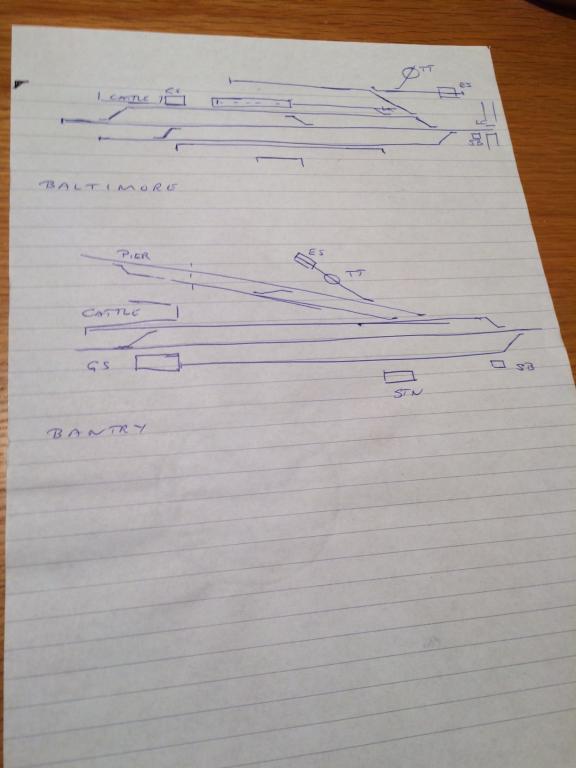
islandbridgejct
Members-
Posts
212 -
Joined
-
Last visited
Content Type
Profiles
Forums
Events
Gallery
Blogs
Store
Community Map
Everything posted by islandbridgejct
-
Thanks, Glenderg. I'll see if I can manage a bit of progress over Christmas - probably shut the network down for 2 weeks, put on a replacement bus, then get out the soldering iron. I'll try not to make a habit of it. Alan
-
That's my job interview right there.
-
Management of this thread would like to announce that, as part of our new improved customer focused approach to modelling, we will, going forward be actioning new and exciting ways of achieving innovative results for all our stakeholders, and consistently striving to exceed expectations in producing exceptional models to the finest standards. Or, to put it another way, I've been doing F-all. It all began to go off the rails back in January when I ordered some bogies and w-irons from Bill Bedford. Great yokes but there was a delay in delivery from February to July, which didn't matter because work was taking up too much modelling time anyway - no point starting modelling after midnight. I tried knocking up some SSM w-irons, but to be honest I don't really like compensated wagons because they wobble too much. Anyway, I was having trouble getting them square and was a bit puzzled at how to deal with it. By the time I had it cracked, it was summer. August was holidays, and then I came up with my top secret plan to change career to leave more modelling time free, which has resulted of course in less free time for modelling. If they gave out medals for irony.... I'll get the thread back up in due course, but for the moment I'm just reporting that I've nothing worthwhile to report. Move along please, ladies and gentlemen, nothing to see here. Alan
-
Thanks John, I had done something similar with the photos, and then scaled them so that the buffer height was 14mm and cross checked against a wheelbase of 38mm. This is what I came up with: It's pretty much confirmed by your calculations. I think it's a bit unlikely that the GSWR moved from a longer wagon to a shorter standard, and a bit more likely that these photos are not the standard. I've noticed that the 1915 standard box van was perpetuated by the GSR and CIE, and it seems to have been 19 to 20 ft in length, so there may have been some false moves towards longer wagons at an earlier stage, but not persisted with, and those are the photos I've got access to. I've some drawings of box vans and opens that work out at between 17' and 20', and there is no reason why length should have been critical here. Oh well, back to work on my frames. Alan
-
Various underframe problems have kept progress to a minimum over the past few months, but things are beginning to move again. I wonder can anyone help we with a query. Murray on the GSWR says the standard length for GSWR wagons was 14ft (56mm in 4mm scale). He says the GSWR experimented with some 19ft wagons in the early 1900s (76mm) but that the order was not repeated. Earlier in the book, he includes the following photos: These seem to be official photos rather than personal ones, from the 1890s so should be long out of copyright. If anyone thinks differently, please let me know. I've been scaling them and drawing them up, and by my reckoning the butter wagon is 14ft, but the convertible, the cattle and the open are more like 17ft (assuming 3ft in to the middle of the buffers and 9ft 6in as a cross check for the wheelbase.) Also, the cattle wagon builder's photo is dated 1890, but Murray says that from 1877 all cattle wagons had to be covered. Shepherd on the MGWR provides a drawing for a convertible wagon that is 14ft 2in, apparently introduced in 1893, and a 16ft open from 1889. He says covered cattle wagons were introduced from 1899. Photos from the O'Dea collection show withdrawn convertible, covered and cattle wagons, but never straight on. However, they seem to confirm that open cattle wagons were still in use and being withdrawn in the 1950s, and the covered and convertible wagons look shorter than their English equivalents, which would seem to point to the 14ft length. So, should I follow the photographic evidence, and build 17ft stock, or should I take it that the pictured wagons are non-typical and follow the written word - and if so, whose? Suggestions gratefully received...
-
RPSI and Steam Dreams Tour
islandbridgejct replied to snapper's topic in What's happening on the network?
Just passed this set at Portarlington, 10.41. 461 ready to head for Galway. Seems to be running reasonably to time today. The tables were nicely set. (*Hungry on Cork train.*) -
Oh, you're on the slippery slope there. Real points also don't have truck tyre sized gaps through the crossing or alongside the check rails. They don't have loose heels. They don't have 18" radius. They're at least 35cm long in 4mm scale, and could be up to 60. Be careful before you go down that road - you could end up 3 years along with b****** all to show for yourself. Ask me how I know. If your points are in gauge and working for you, and your wagons are square, just put some silver paint on the top of the frog, some track colour on the side, and carry on. Alan
-
Hi Ian, On the gauge question, the P4 Society is pretty good for 21mm stuff, but a steep learning curve that I'm still trying to get up after 3 years of (admittedly fairly desultory) effort. I imagine the EM Gauge Society probably sells relevant parts too, and is easier to work in - Mayner could advise you on it. I feel the look of 21mm gauge is worth the effort - others say life is too short. Good luck, whichever you choose. Alan
-
Looks fantastic. Can't wait.
-
Yup. Awesome.
-
Those would have been the 5th coach in a Dublin push-pull unit. The Bulleid railcars were converted with a corridor connection (vestibule? can't remember the proper word) to the railcar at either end. They looked unusual in the push-pull rakes because they had a profile more like the standard CIE coaching stock profile, and were broader above the waist and had a different roof profile to the AEC units. I'm surprised one of them lasted until 1987 because most were withdrawn when the DART was launched in 1984. It might have been used on the Bray - Greystones shuttle which used push-pull units until 1987 when a NIR 80 class was rented to operate it. Alan
-
Current work involves a lot of measuring the boot of the car to see how much portable layout I could get into it. Then going back and remeasuring it and getting a slightly different answer. The idea is that I don't have a permanent site, so might as well have something I can move around, set up and take down. That way, I can make a move on the sitting room.... Then I'm chasing track plans - everywhere from the North Wall to Valencia Harbour to see what fits and would provide operating interest. Vital calculations for all this include: 4 6 wheelers @ 30 ft -> 4 x 130mm (to include buffers) = 520mm. 4 bogie @ 50ft -> 4 x 210mm = 840mm. 4 bogie @ 60ft -> 4 x 250mm = 1m 8 bogie @ 60ft -> 8 x 250mm = 2m So a mainline train would be 2.5m long, while a branch train anything from 0.5m to 1.25m. Platforms would need to be based on this - the GSWR seemed to build its platforms as long as or longer than its trains, strangely enough. A B8 crossover takes 540mm, while a single turnout is 330mm. Putting these together, my current reckoning is that Baltimore or Bantry would need 3m; Headford Jct would need 4m; Charleville 5-6m; Mallow or Killarney, 6-7m and more width than I can manage, plus too many sidings to fill. Kilkenny has interesting operating potential in 5 - 6m - trains coming in from Heuston via Carlow at one end, trains coming in from Maryboro at the other and running through to Waterford. Huge coal sidings and drops and fairly healthy goods traffic. Headford is a nice compact junction. A branch train shuttling up and down 4 times a day, and 6 mainline workings each way, but only one mainline and 1 branch platform, so no passing mainline trains. Fish specials out of Kenmare, I think. I wonder would the GSWR have sent traffic from Fenit Pier that way rather than over the North Kerry. A branch line needs shorter fiddle yards at each end, and a terminus would only need one, but I've always liked turning the power on and letting the trains run round and round, but that's OO talk so it is. My calculations say I could get 7.4m operating length on 0.65m width plus 2m for a fiddle yard and still set up in the house at a stretch, and pack into the car. A bit narrow perhaps, but so are most stations, and I could fit Headford with a fiddle at each end, and maybe a short terminus based on Bantry or Baltimore in front of the fiddle yard if it was kept to 2 tracks at that end. I'm sure that won't work once I start working it out in Templot. Anyway, the planning and pondering is fun. * Meanwhile, back in Inchicore works, supplies have dried up. Bill Bedford has gone to ground. Allen Doherty of Worsley Works is overworked, but not in the railway department. Des is sending out a CIE 30t brake and a J26 - neither key to my plans, but a good place to start building nonetheless. Scratchbuilding involves putting plastic metalwork on plastic wagons, and buiding a jig for some more brass ones. I know, I know. Styrene is easier, but I like brass. It feels more real or something. (I'd better get some good etch primer though, if I want the paint to stick to it.) Anyway, I need some strip for that, and neither Marks nor himself on Capel Street have the right sizes, so it looks like another order into Eileen's, and then a sharp intake of breath as I remember the euro is crashing through the floor. So not much in the way of pics at the moment. These are the wagons getting their strapping (white on white, good for confused Dylan fans and apartheid era p*rn, not so good for showing detail): I've used a variety of materials for this, tracing paper, cartridge paper, cut plastic (0.25mm) and styrene strip (0.5mm). The styrene is a bit thick and tends to bend and distort when you emboss rivets into it. The paper is better. The tracing paper is a bit too thin - the cartridge paper seems about right. And track plans for Bantry and Baltimore, schematic: That's all for now. Alan
-
One further point on that, I contacted Parcel Motel last week to see if they had a GB delivery address. They don't, only NI, and they didn't seem at all interested in setting one up. Perhaps if others were to ask them the same thing, they might introduce delivery from the other island.
-
The lead coach with the duke in it is a 4 compartment 1st/3rd, two 1st compartments in the centre, two 3rds at the outer ends, no central luggage space or toilet, so that makes it a 300 series. Numbers were 300 to 384, 914 and 915. They were built as 1st/2nds from 1879 to 1893. By 1950 the only ones still in service were 300, 307, 308,310, 315, 316, 318, 328, 329, 330, 331, 381, 383, 914 and 915. The van is a full brake with side duckets and no birdcage, assuming it's the same one in the arrival and the bridge shots. That makes it a 1011 series (earliest one listed), built from 1885 right up to 1908. Numbers in service in 1950 were 2, 3, 5, 7, 8, 14, 18, 19, 21, 22, 23, 24, 64, 66, 71, 73, 74, 258, 1004, 1005, 1010, 1011, 1018, 1019, 1020, 1070, 1071, 1072, 1073, 1074, 1075, 1076, 1077, 1078, 1079. I can't see enough of the others to know what they are. The GSWR seems to have turned out carriages to a series of different designs as required, and numbered them sequentially regardless of series. An almost identical van, but with birdcage, was built in significant numbers in the same time period, and the number series are interlinked with this, at least at the lower end. Also, the lower numbers are on the later builds, as if they were replacing earlier vehicles with the same numbers. I know the GSWR did this for locos (52 class and 101 class) so it's not surprising to find it in the carriage roster too. It really is a delight to see Ireland in Technicolor in 1950, and does counteract the general impression we have of it now as a dreary time. Definitely as good as, or better than, a John Hinde postcard - and probably about as realistic. I'm severely smitten. (All information based on Richards and Pender, GSWR Carriage Diagrams, Transport Research Associates 1975, and none of it cross-checked, so it could be wrong.)
-
Certainly looks ok so far. You might want to read this for free advice on loco building - http://www.scalefour.org/forum/viewtopic.php?f=20&t=993 By coincidence, I've just ordered a 30t brake and a J26 myself, but I'm a committed dabbler. (And don't ask me to explain the various jigs in that thread - I'm perplexed myself.)
-
Somewhat off topic, but I was down by the Royal Canal a few years back and thought I could hear a low rumble above the noise of the wind. After 2 minutes, I decided I had been imagining things. After 4, I knew I hadn't. After 5, an 071 appeared with a liner and clattered on past. Fantastic memory, that 071 sound, just on the edge of hearing.
-
Those are very realistic - the planks look like wood and the solebars like metal. Lovely standard of observation and rendering.
-
The SPADs during the leaf fall season will be only epic.
-
CIE locomotive livery variations 1960-1990
islandbridgejct replied to jhb171achill's question in Questions & Answers
Thanks. -
Look at that. Is that an inside scissors or an outside scissors. Someone had modelled one in a recent MRJ or Scalefour News, and I'd never heard of them before I saw the model, and I certainly didn't think I'd see a prototype anywhere in this country. (The funny thing about it is that the further obtuse crossing is between the two running lines, outside the crossing, while the nearer one is in the closure rail, inside the crossing.) Imagine trying to model that.
-
Friction is a terrible problem alright. Mind you I was expecting you to suggest it was in the axleboxes and cranks. I didn't think you were talking about the Big Ends. I wonder why introduce a 2nd example of a class, only to scrap the first one 4 years later? Was that about the time Morton took over as CME, and was there a change of policy, or was it just the usual GSR inconsistency in withdrawals?
-
I guess it probably does have trouble articulating itself so. Lovely model -
-
No idea how you managed that in 40 hours. You're obviously not paid overtime anyway. Gorgeous work. I particularly like the smokebox door clips. Alan
-
Typo there - they were converted to 4-6-2Ts. Mr Watson seemed to have trouble with his big engines. She looks very impressive. Have you any more pics?
-
That looks nice.
.png.c363cdf5c3fb7955cd92a55eb6dbbae0.png)

